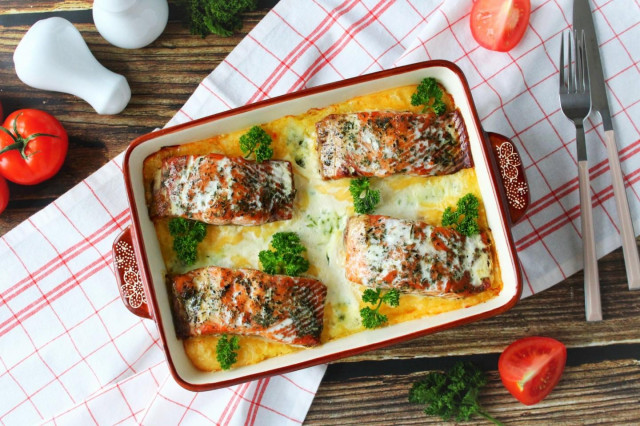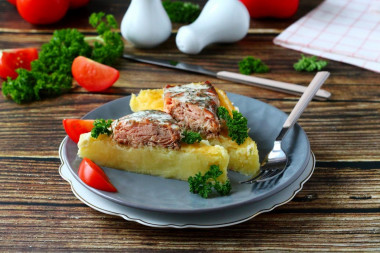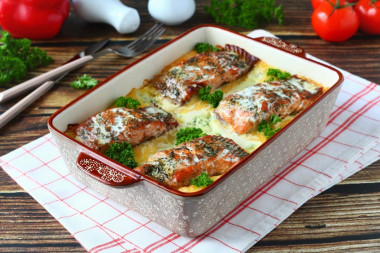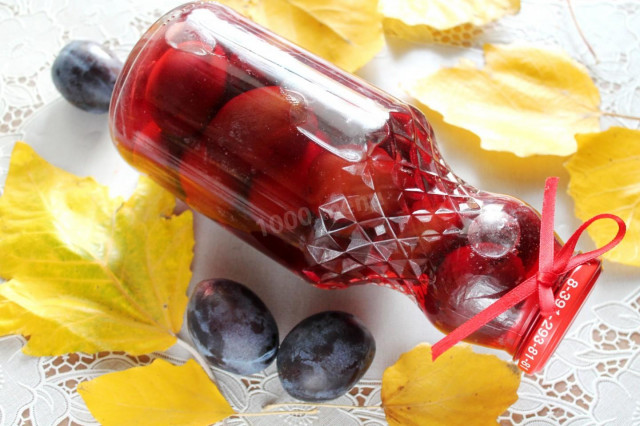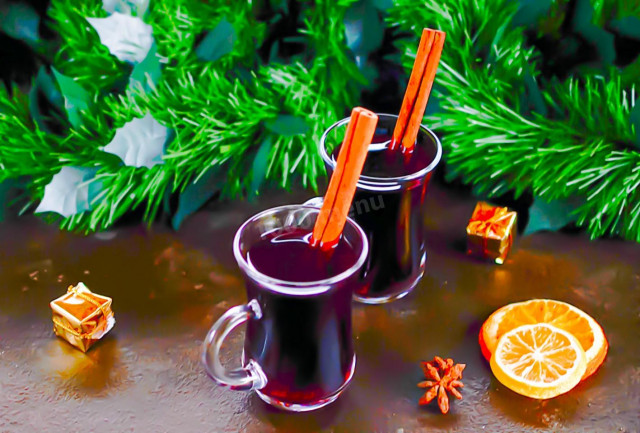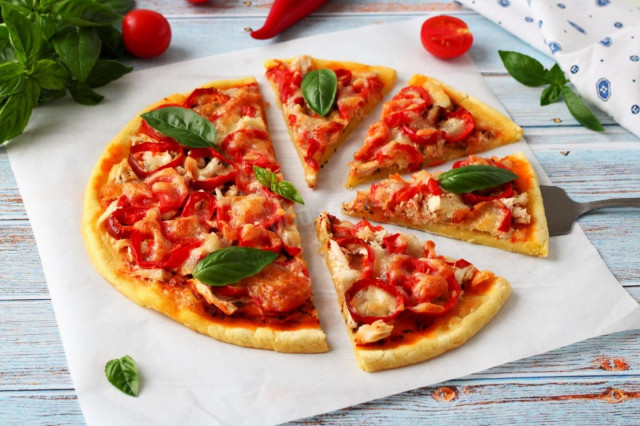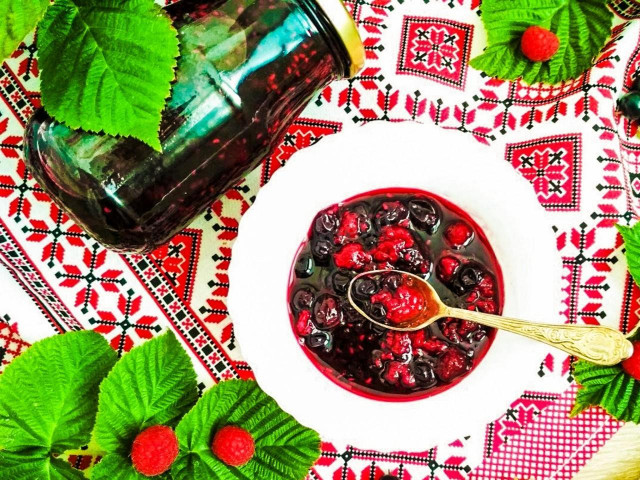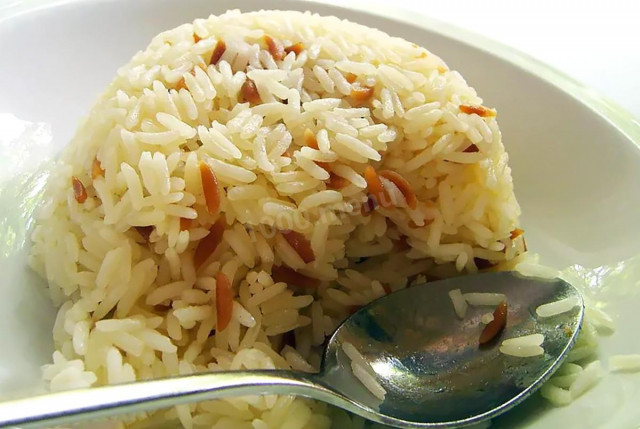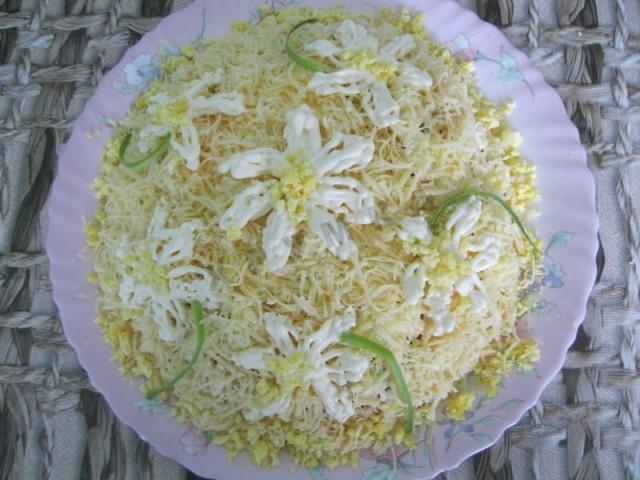Composition / ingredients
Step-by-step cooking
Step 1:
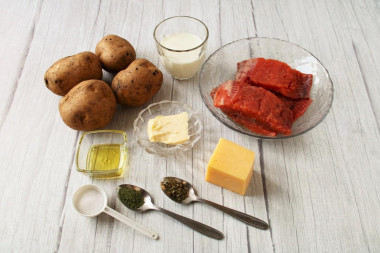
How to make a potato casserole with fish in the oven? Prepare the necessary ingredients. I took salmon fillets, but you can use fillets of both red and white fish (pollock, hake, tilapia). Instead of olive oil, any vegetable oil is suitable.
Step 2:
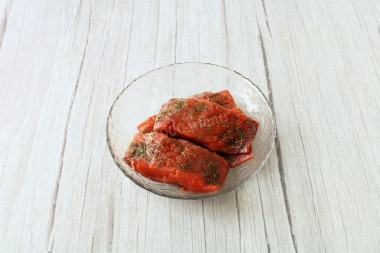
Add salt to each piece of fish fillet, sprinkle with spices and herbs to taste. I took basil and Provencal herbs. To make the fish juicier, pour olive oil over it. Cover the fish, leave for 30 minutes so that the herbs and spices reveal their taste.
Step 3:
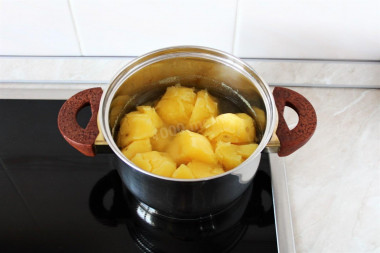
Pre-wash the potatoes with a brush under running water, clean. Boil the potatoes in salted water over moderate heat until tender.
Step 4:
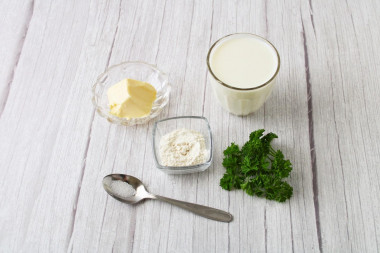
While the potatoes are cooking, prepare the milk sauce. Heat the milk slightly. Instead of parsley greens, you can take dill.
Step 5:
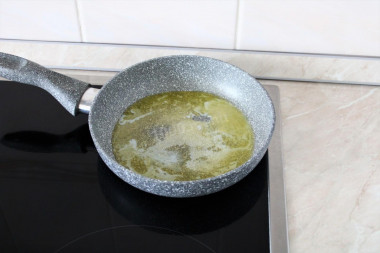
Melt the butter in a frying pan with a thick bottom.
Step 6:
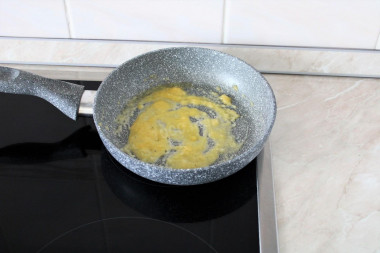
Add flour to the pan, stir. With constant stirring, fry the flour over low heat for 1 minute.
Step 7:
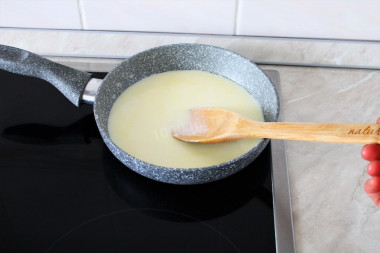
Pour in the milk in small portions, while actively stirring the mass until the flour lumps disappear.
Step 8:
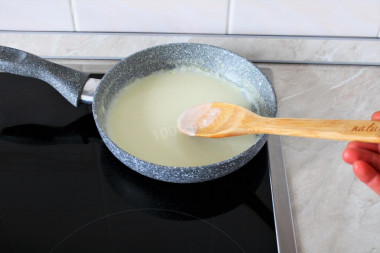
Boil the sauce over low heat while stirring until lightly thickened for about 2 minutes. Add a little salt to the sauce.
Step 9:
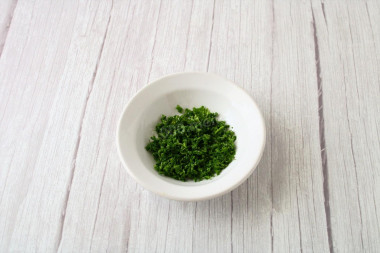
Rinse the parsley thoroughly under cold water, dry, chop finely.
Step 10:
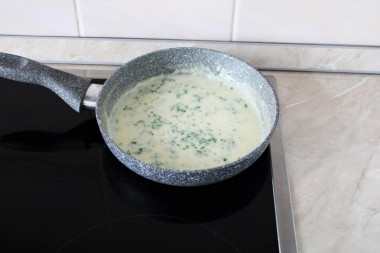
Add the herbs to the sauce, stir, remove from heat.
Step 11:
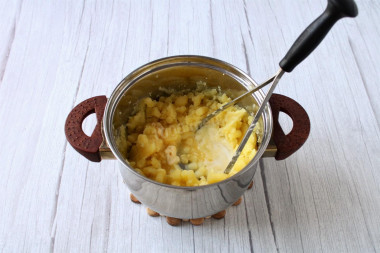
Drain the water from the finished potatoes. Mash the potatoes with a potato masher, adding butter and warm milk at the same time.
Step 12:
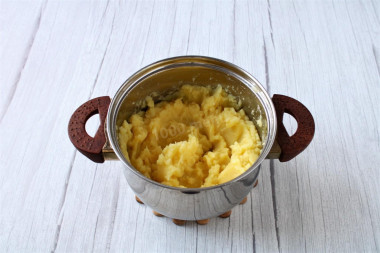
Mashed potatoes should be homogeneous, without lumps.
Step 13:
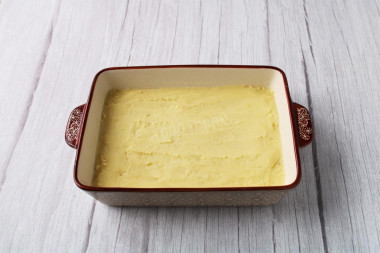
Grease the baking dish with a small piece of butter. Put the mashed potatoes, smooth with a spoon. I have a form size of 27x17 cm.
Step 14:
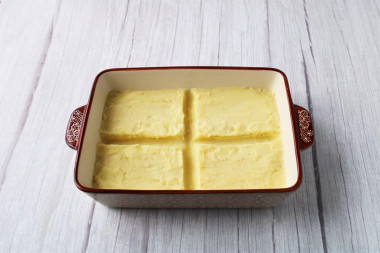
Divide the mashed potatoes into 4 identical parts, making grooves with a depth and width of at least 1 cm.
Step 15:
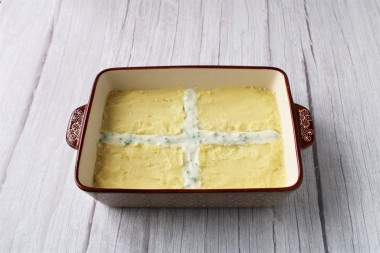
Fill the grooves with milk sauce.
Step 16:
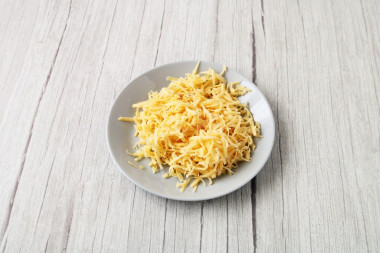
Chop the cheese on a coarse grater.
Step 17:
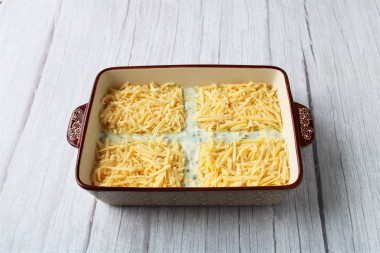
Put the cheese on the divided pieces of mashed potatoes.
Step 18:
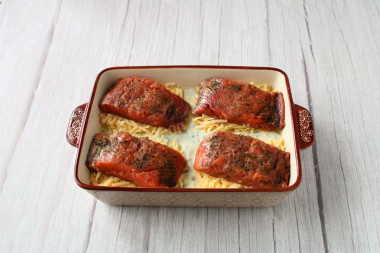
Place a piece of fish fillet on top of the cheese on each part.
Step 19:
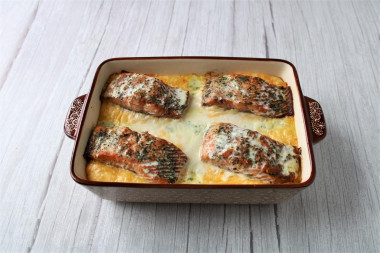
Put the casserole in a preheated 180C oven for about 25-30 minutes until the fish is ready. The main thing is not to overdo the casserole so that the fish and cheese crust do not dry out. If necessary, you can cover the mold from above with foil.
Step 20:
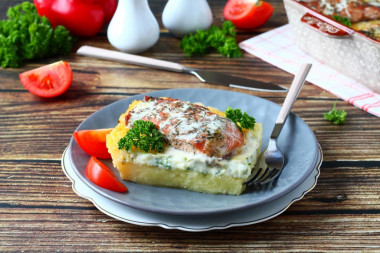
Serve the potato casserole with fish hot with fresh vegetables. Bon appetit!
Everyone liked the casserole. Mashed potatoes combined with sauce and cheese turned out to be very tender, and the fish is fragrant. You can serve the casserole with the remaining milk sauce.
Never defrost the fish to the end if you have to cut it up! It is best to put it on the bottom shelf of the refrigerator and bring it to a slightly defrosted state. Then any manipulations, starting from cutting into steaks or large pieces and ending with cutting into fillets, will be successful. Completely unfrozen fish when butchered risks turning into a shapeless mass.
Keep in mind that everyone's ovens are different. The temperature and cooking time may differ from those specified in the recipe. To make any baked dish successful, use useful information about the features of ovens !
Any heat-resistant form is suitable for this recipe. It is better to lightly lubricate metal, ceramic or glass dishes with butter so that the casserole does not burn.
Caloric content of the products possible in the composition of the dish
- Ripe potatoes - 80 kcal/100g
- Baked potatoes - 70 kcal/100g
- Mashed potatoes - 380 kcal/100g
- Boiled potatoes - 82 kcal/100g
- Potatoes in uniform - 74 kcal/100g
- Fried potatoes - 192 kcal/100g
- Whole cow's milk - 68 kcal/100g
- Milk 3.5% fat content - 64 kcal/100g
- Milk 3.2% fat content - 60 kcal/100g
- Milk 1.5% fat content - 47 kcal/100g
- Concentrated milk 7.5% fat content - 140 kcal/100g
- Milk 2.5% fat content - 54 kcal/100g
- Dutch cheese - 352 kcal/100g
- Swiss cheese - 335 kcal/100g
- Russian cheese - 366 kcal/100g
- Kostroma cheese - 345 kcal/100g
- Yaroslavsky cheese - 361 kcal/100g
- Altai cheese 50% fat content - 356 kcal/100g
- Soviet cheese - 400 kcal/100g
- Cheese "steppe" - 362 kcal/100g
- Uglich cheese - 347 kcal/100g
- Poshekhonsky cheese - 350 kcal/100g
- Lambert cheese - 377 kcal/100g
- Appnzeller cheese with 50% fat content - 400 kcal/100g
- Chester cheese with 50% fat content - 363 kcal/100g
- Edamer cheese with 40% fat content - 340 kcal/100g
- Cheese with mushrooms of 50% fat content - 395 kcal/100g
- Emmental cheese with 45% fat content - 420 kcal/100g
- Gouda cheese with 45% fat content - 356 kcal/100g
- Aiadeus cheese - 364 kcal/100g
- Dom blanc cheese (semi-hard) - 360 kcal/100g
- Lo spalmino cheese - 61 kcal/100g
- Cheese "etorki" (sheep, hard) - 401 kcal/100g
- White cheese - 100 kcal/100g
- Fat yellow cheese - 260 kcal/100g
- Altai cheese - 355 kcal/100g
- Kaunas cheese - 355 kcal/100g
- Latvian cheese - 316 kcal/100g
- Limburger cheese - 327 kcal/100g
- Lithuanian cheese - 250 kcal/100g
- Lake cheese - 350 kcal/100g
- Gruyere cheese - 396 kcal/100g
- Fresh basil - 27 kcal/100g
- Dried basil - 251 kcal/100g
- Parsley greens - 45 kcal/100g
- Butter 82% - 734 kcal/100g
- Amateur unsalted butter - 709 kcal/100g
- Unsalted peasant butter - 661 kcal/100g
- Peasant salted butter - 652 kcal/100g
- Melted butter - 869 kcal/100g
- Salt - 0 kcal/100g
- Wheat flour - 325 kcal/100g
- Olive oil - 913 kcal/100g
- Fish fillet - 204 kcal/100g
- Herb mixture - 259 kcal/100g

